2014 Sea-Doo RXP-X 260 Review
Arguably the most aggressive personal watercraft on the market
Sea-Doo’s most-radical musclecraft returns virtually unchanged for 2014. Sure, the company had other things on its mind – namely the unconventional new Spark – but it’s also fair to say that the RXP-X is still as cutting edge as it was upon its introduction in 2012. It’s fast, it corners on the proverbial dime with change, and it’s got coolness factor galore.
Let’s revisit the highlights…
Unique Hull Design
Obviously the RXP-X’s primary calling card is its hull design, a configuration Sea-Doo refers to as T3, for tight-turning T-shape. That T is literally obvious when viewed from behind. The hull angles down from the chines, and then abruptly drops lower into the water along the keel. This gives the boat a reduced running surface at speed.
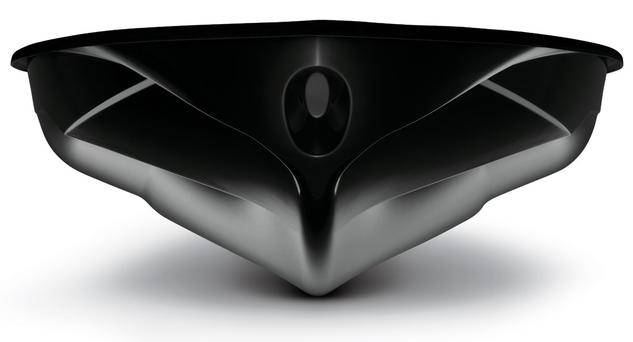 A hallmark of the RXP-X 260 is Sea-Doo’s T3 hull design, which aids in its tight-turning manners.
A hallmark of the RXP-X 260 is Sea-Doo’s T3 hull design, which aids in its tight-turning manners.Staying with that T imagery, the top of the the letter – or the outer sections of the hull – span outward from that dropped running pad before curving upward in soft, rounded chines. The rounded profile allows the boat to roll easily into a turn with an intuitive inside lean.
COMPARISON: 2014 Yamaha FX SVHO Review
To further aid in cornering, Sea-Doo gave the RXP-X winglet-style sponsons. Like the fin of a slalom water ski, they give the vertical sponson a corresponding horizontal edge. That winglet helps as the boat rolls into a turn. Rather than a sponson that decreases in effectiveness as it angles more toward the horizontal, that winglet now becomes a vertical edge and helps to deter chine walk. Owners can lower the sponsons deeper into the water to increase the boat’s agility, or raise them to soften its reflexes.
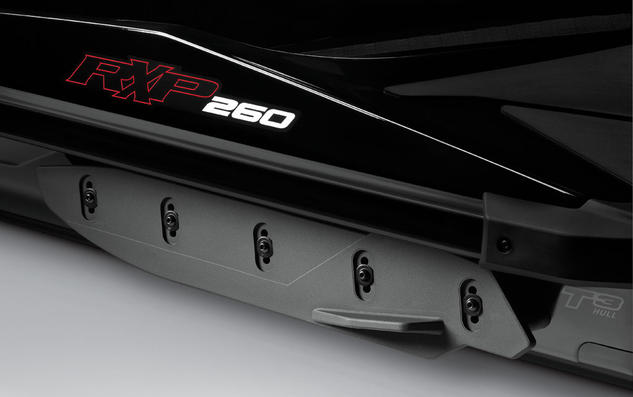 Adjustable sponsons help the craft roll into a turn while its vertical edge deters chine walk.
Adjustable sponsons help the craft roll into a turn while its vertical edge deters chine walk.The remaining key feature is a set of trim tabs at the stern. Like aftermarket add-ons, they force the bow lower for quicker acceleration and less bowrise, increase top-end speed potential, and add some stability to the hull.
The combination results in what arguably remains the hardest-turning, most-aggressive personal watercraft currently on the market. What’s unique, however, is that Sea-Doo acknowledges that a boat that turns that aggressively can also prove one heck of a challenge to stay aboard when those turns are taken at high speed.
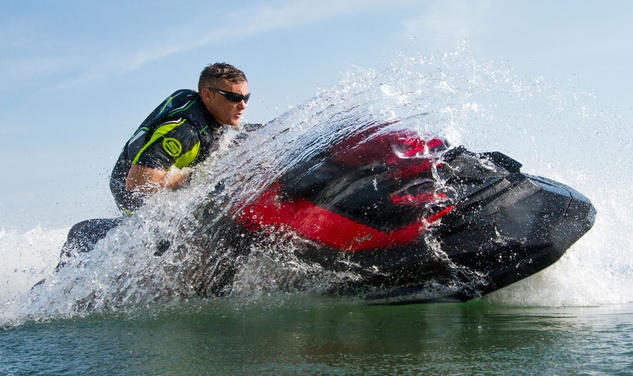 The result of Sea-Doo’s work on hull design is arguably the most aggressive PWC on the market.
The result of Sea-Doo’s work on hull design is arguably the most aggressive PWC on the market.To address the issue, the company tinkered with the boat’s ergonomics and created the “Ergo-lock” concept. First, the middle of the seat was thinned out in an hourglass fashion, which enables the driver to keep their knees in rather than forced wide like most PWC saddles. That seat then continues forward and angles out over the riders thighs in padded bolsters, providing a locked-in feel. Footwells are canted inward to further allow the driver the use of their legs as leverage to stay planted. The end result is that you now use your far stronger leg muscles to keep yourself planted in the seat, rather than fight to stay aboard with your weaker upper body muscles. And you can confidently lean the boat into high-speed corners without fear of ejection.
Wow-Factor Ride
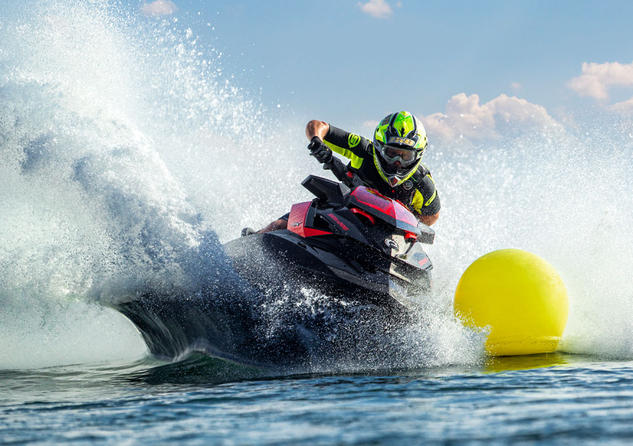 With a claimed 260 horsepower on tap, the RXP-X 260 offers jaw-dropping acceleration.
With a claimed 260 horsepower on tap, the RXP-X 260 offers jaw-dropping acceleration.And with the 260hp version of Sea-Doo’s 1,494cc Rotax 4-TEC below, you’ll dive in and out of those turns with plenty of speed. That engine is boosted by a supercharger and intercooler combo to get up and out of the hole fast and post impressive top-end speeds. With my 155-pounds in the saddle, I recorded 0-30 times under two seconds and easily pegged the boat’s electronically limited top speed of 67 mph. Perhaps more pertinent to the boat’s fun factor potential, I also kept more of that speed into corners than I would ever dare on most other boats. Sea-Doo’s high-speed electronic trim allows you to preset two nozzle positions, and then quickly reach them with a simple double-tap of the button. I flew towards a buoy, dropped the nozzle, and then cranked through the tightest of turns with far more confidence than normal. It’s guaranteed to put a smile on your face.
COMPARISON: 2013 Kawasaki Jet Ski Ultra 300X Review
Just don’t forget to give the boat its due respect. This is one powerful, aggressive machine, so work up to things…and be ready for some sore leg muscles after those first few rides.
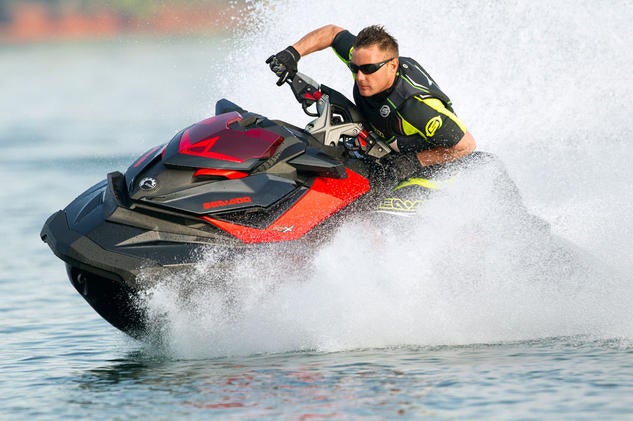
It’s also wise to keep in mind the boat’s minor quirks. There are certain to be tradeoffs in any smaller, thinner hull design. For me, the saddle setup worked almost to perfection, but taller riders will note the seat bolsters forces them to sit a little farther back in the saddle. I also continue to note a few instances when, after releasing the throttle abruptly, the hull rolls to one side as it comes off that running pad. They’re nothing major, but worth noting.
Brakes, X Package…And More
In terms of the classic “bells and whistles,” the RXP-X has a few more surprises. Most notable is its inclusion of Intelligent Brake and Reverse (iBR). That makes this race-like craft also quite mannerly around the dock or launch ramp, and gives it stopping power at speed. For those unfamiliar with the system, it essentially modifies the reverse bucket to act as a brake. Squeeze the lever on the port grip and that bucket drops down and redirects thrust to provide enough force to slow the craft in about half the distance normally required. It also allows any Sea-Doo to start in a neutral setting at the dock, meaning you won’t surge forward the minute the boat starts, and be shifted quickly between forward, neutral, and reverse with just the pull of the reverse lever or throttle. It’s intuitive, keeps your eyes on the water at all times, and works well.
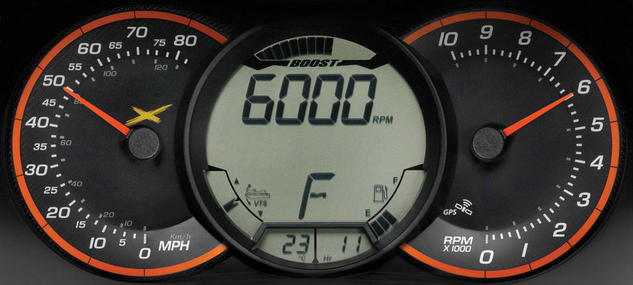 You can monitor the craft’s boost pressure on the gauge cluster.
You can monitor the craft’s boost pressure on the gauge cluster.
The RXP-X also gets electronic throttle, enabling Sea-Doo to offer two distinct acceleration curves, the more-aggressive Sport setting or a tamer Touring mode. You can also choose an ECO setting to find the most fuel-efficient response. The boat’s X-Package includes a race-inspired seat coloration, X handlebars which can be adjusted for both angle and grip width, and the addition of a real-time boost pressure indicator to the gauge package.
COMPARISON: 2013 Yamaha FZS Review
These features are on top of the classic digitally encoded lanyards that act as both theft-prevention devices and speed limiters, and the boat’s surprisingly large 30.8-gallon storage capacity.
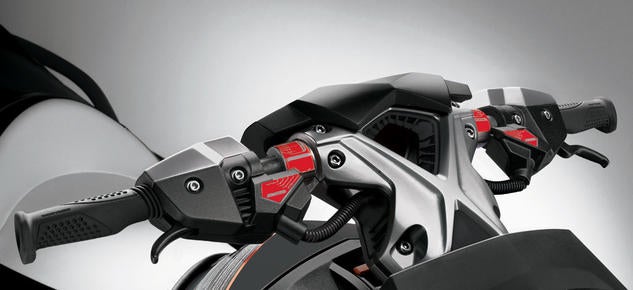 Sea-Doo’s X handlebars scream high performance.
Sea-Doo’s X handlebars scream high performance.You’ll appreciate them all, but let’s be perfectly honest – the deciding factor on an RXP-X 260 is just how much you like to turn and burn. If the answer is a lot, you owe it to yourself to give the boat a test ride. Just be ready. The next move is likely to be the reach toward your wallet.
| 2014 Sea-Doo RXP-X 260 Review Specs | |
| Length | 130.6 inches |
| Beam | 48.3 inches |
| Dry Weight | 812 lbs |
| Engine | Three-cylinder EFI, Supercharged/Intercooled |
| Displacement | 1,494 cc |
| Bore and Stroke | 100 mm x 63.4 mm |
| Compression Ratio | 8.4:1 |
| Rated Horsepower | NA |
| Fuel Capacity | 15.9 gal. |
| Combined Stowage Capacity | 30.8 gal. |
| Colors | Viper Red |
| Price | $14,799 |
Get PersonalWatercraft.com in your Inbox!
Like PersonalWatercraft.com on Facebook
Comments
Most Popular

2025 Yamaha JetBlaster PRO 2-Up Review

2024 Kawasaki Jet Ski STX 160X Review

Remembering the Sea-Doo XP

Whatever Happened to the Wetbike?

2025 Yamaha JetBlaster Review













 Your Privacy Choices
Your Privacy Choices